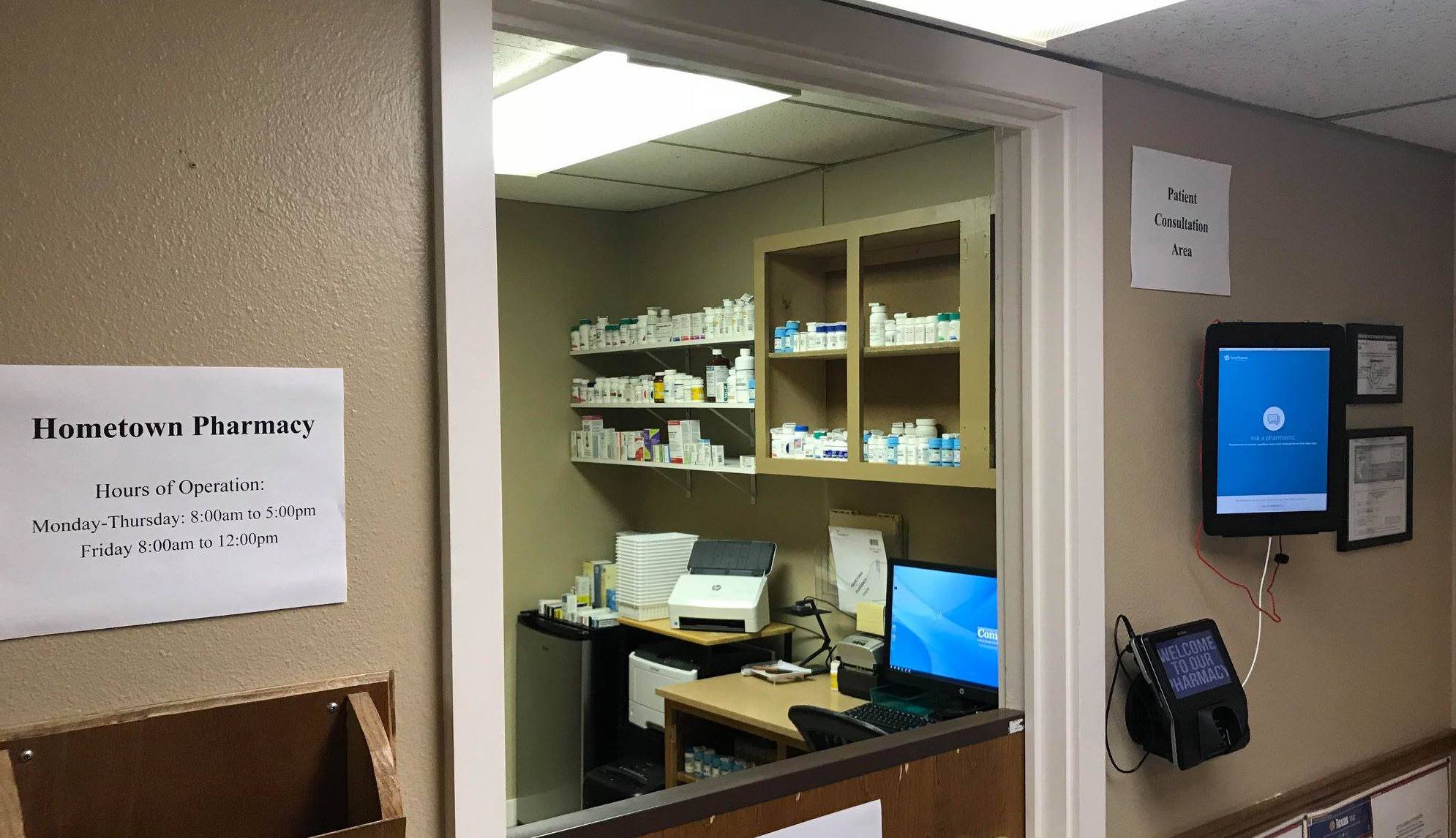Back to Basics: Telepharmacy and How it Works

Telepharmacy — much like the term "telehealth" — has become a popular buzzword in everyday healthcare chatter, from community pharmacy to clinics and health systems. Chances are you’ve heard of it, but don’t fully understand the concept and why it makes sense in today’s competitive pharmacy market.
So what is telepharmacy? How does telepharmacy work? Let's start simple.
The definition of telepharmacy
Telepharmacy is defined as, "the provision of pharmaceutical care through the use of telecommunications and information technologies to patients at a distance," according to the National Association of Boards of Pharmacy.
This broad definition of telepharmacy has many different applications. There are four different types of telepharmacy:
- Remote dispensing (retail/outpatient/discharge)
- Remote patient counseling (video counseling)
- Remote order-entry review (inpatient)
- IV admixture verification
More about telepharmacy
When telepharmacy first appeared in the early 2000s, the concept was centered around a single video link between a technician and pharmacist. New-age telepharmacy programs, like our Outcomes® Telepharmacy solutions, incorporates an imaged-based workflow (which enables the remote verification of prescriptions) and patient counseling through a secure, high-definition live-video connection. In terms of the four different types of telepharmacy, we partake specifically in remote dispensing (retail/outpatient) and remote patient counseling.
The ability to connect any pharmacist to any pharmacy offers patients in rural communities access to the professional care they would otherwise not receive. With that said, "Does telepharmacy provide the same quality care you're used to at a traditional pharmacy?" According to Dr. Charles Peterson, Dean of the North Dakota College of Pharmacy and pioneer of the North Dakota Telepharmacy Project, the answer is yes.
“Telepharmacy services produce the same quality as the traditional mode of delivery and provide some value-added features that are not found in traditional pharmacy practice." - Dr. Charles Peterson, Dean of the North Dakota College of Pharmacy, ND Telepharmacy Project
Additionally, telepharmacy is a safe practice of pharmacy and has been proven to have a lower dispensing error rate than traditional pharmacies according to the NDSU telepharmacy project.
"Telepharmacies' error rate is less than 1 percent, a 50 percent improvement over traditional practice and half the national average." - U.S. Department of Health and Human Services
Telepharmacy is feasible in community pharmacies, hospitals, health systems and clinics, nursing homes and other medical-care centers. But before we dive into different applications for telepharmacy, let's look at how telepharmacy works.
How it works
A retail telepharmacy, or remote-dispensing site, operates like a traditional pharmacy except for the pharmacist reviews prescriptions and counsels patients from a remote location. To get a better understanding, let's dive a little deeper.
Retail telepharmacy technology has drastically changed since the North Dakota Telepharmacy Project paved the way in the early 2000s. Although hardware solutions were the standard for the first telepharmacy pilot projects, they are cost-prohibitive and expensive to repair and update. Today's new telepharmacies use software to ensure patient safety and enhance their workflow. To be sure we're on the same page, we're discussing retail, outpatient or discharge telepharmacy.
Telepharmacy in four simple steps
- A prescription arrives at the pharmacy
Similar to a traditional pharmacy, prescriptions enter through the pharmacy management system (PMS). Telepharmacy software integrates with pharmacy management systems for a seamless, real-time experience. This allows the pharmacy technicians who work in the remote-dispensing site to focus on filling prescriptions. - The prescription is filled
After the prescription arrives at the pharmacy, a technician prepares it to be dispensed by the pharmacist. For the prescription to be filled and verified in a modern telepharmacy, technicians capture images of the prescription, labels, tablets, and bottle with the lot number and expiration date exposed. These images, along with the patient’s profile, are securely stored in our software and are immediately accessible to the pharmacist at the host pharmacy location. An audit log of every prescription is stored in the system after verification has taken place.
When telepharmacy first started, technicians would send prescription information to off-site pharmacists via live-video connection. This was an inefficient practice as both the pharmacist and the technician had to be at their computer on the same screen at the same time. Modern telepharmacy software, like Outcomes Telepharm, has since transitioned to an image-based workflow which helps optimize productivity by organizing the pharmacist's workload. This type of cloud-based telepharmacy software is notably cheaper than the expensive, hardware-reliant alternatives.
Best of all, there are less dispensing errors that occur at telepharmacies when compared to traditional retail pharmacies. This is due to multiple built-in redundant checks, hard-halt workflows and HIPAA-compliant security. - The pharmacist reviews the prescription
Before verifying the prescription, pharmacists review the patient’s medication profile for drug interactions and other potential problems. After the pharmacist reviews the images, they can either approve or reject the submission. If rejected, the pharmacist will leave notes for the technician regarding the discrepancy. If approved, the technician is notified and the medication is packaged and placed in will-call for the patient.
In a modern retail telepharmacy network, one pharmacist can verify prescriptions for multiple pharmacies or the workload can be shared between multiple locations thus decreasing overall costs. - Live-video patient counseling
Before prescription medication can be dispensed to a patient, they must speak with the pharmacist via a live-and-interactive video counseling session. The remote pharmacist has all necessary patient information, including medication history, readily available during counseling. Patient-counseling sessions are safe, secure and private due to the HIPAA-compliant live-video HD connection provided by Outcomes™. An attached handset plugged into the patient-facing tablet ensures that the conversation with the pharmacist is private and not overheard by the other patients in the pharmacy, which is often the case in traditional pharmacy settings (depending on how loudly the pharmacist talks).
That’s how telepharmacy works!
Here are three quick takeaways:
-
A telepharmacy operates like a traditional pharmacy except for the pharmacist reviews and verifies prescriptions from a host pharmacy location.
-
Retail telepharmacies experience fewer dispensing errors than traditional retail pharmacies.
-
One pharmacist can review prescriptions for multiple pharmacies, or the workload can be shared between pharmacists in multiple locations.





